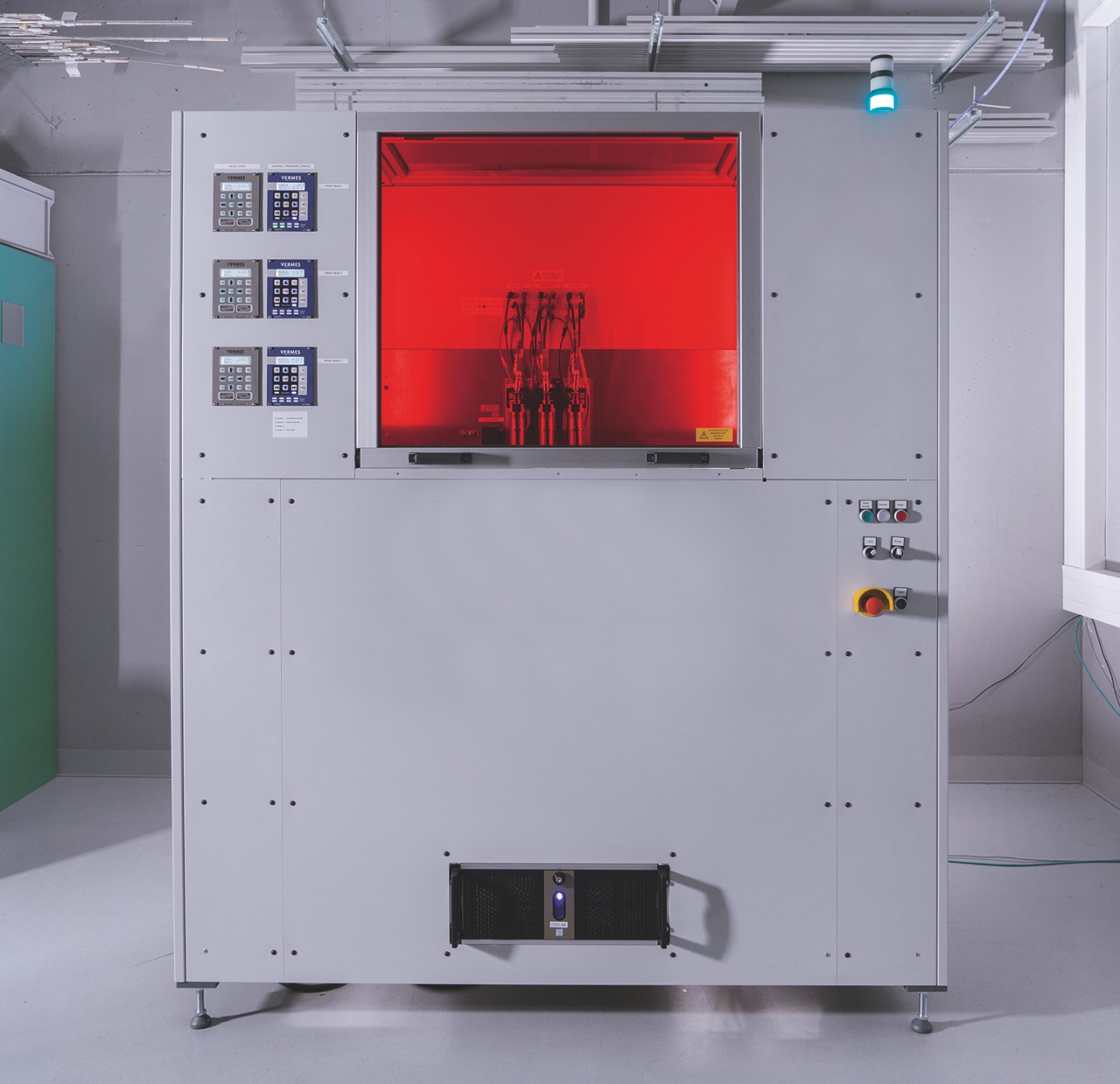The Fraunhofer family of German research institutes is endlessly inventing novel methods for manufacturing and supplementary technologies. The latest, this time from the Fraunhofer Institute for Ceramic Technologies and Systems (IKTS), is a multi-material ink jetting system capable of 3D printing multiple metals or ceramics in a single build. To demonstrate the power of the process, the Fraunhofer IKTS researchers 3D printed a ceramic satellite with built-in ignition.
The technology is similar to existing polymer inkjet 3D printing technologies, like PolyJet from Stratasys; however, it begins with a ceramic or metal powder mixed into a thermoplastic binder. This slurry is then melted within micro-dosing systems at temperatures of about 100°C and then deposited at rates of up to 60 mm and 1,000 drops a second, with droplets ranging in size from 300 to 1,000 μm and resulting in layers of between 100 and 200 μm in height. Part sizes can reach up to 20 × 20 × 18 cm (7.87” x 7.87” x 7.09”).
Fraunhofer IKTS researcher Uwe Scheithauer explained, “The critical factor here is the custom dosing of the metal or ceramic slurries. Getting the dosing right is key to ensuring that the additively manufactured final product takes on the required properties and functions during subsequent sintering in the furnace, including properties such as strength, thermal conductivity and electrical conductivity.”
Part of achieving this accuracy is software developed by the team to ensure precise positioning of the droplets during the printing process.
According to Scheithauer, up to four different materials can be printed at a time, allowing for the production of multi-functional parts with specific physical properties. This includes an ignition system for a ceramic satellite propulsion engine. Choosing ceramics for their ability to withstand the high heat experienced by satellite engine combustion chambers, the Fraunhofer team 3D printed an ignition system made up of three different materials: an electrically conductive ceramic, an electrically insulating ceramic, and a support material that disintegrates during post-print sintering in a furnace.
The German institute imagines other applications for the technology, including consumer goods such as a two-tone ceramic watch the team made for an individual customer, or industrial parts. Scheithauer elaborated:
“We could also use it to make blanks for carbide parts, for example. Thanks to the tremendous precision of the dosing systems, the contours of the blanks would already be very close to those of the end product. They would therefore require very little subsequent grinding as compared to conventional methods. That’s a big advantage when you are working with carbide.”
Now that the technology has been realized and its scalability demonstrated, the Fraunhofer IKTS team will validate it for industrial use. This means partnering with industrial customers, with Fraunhofer potentially helping them develop materials, as well as software for process monitoring and automation. The German research institute will be discussing the technology at the CERAMITEC Conference hosted online on September 16 and 17, 2020.
We’re still a long way from the ability to 3D print complete functional objects within a single manufacturing process, but Fraunhofer is bringing us closer to achieving that goal. Along with them are companies like Optomec, whose Aerosol Jet 5X system was is used for the mass production of cell phones, and startups like InkBit, who may soon herald a future in which custom electronics can be made with just one machine.
Images courtesy of Fraunhofer IKTS.
Subscribe to Our Email Newsletter
Stay up-to-date on all the latest news from the 3D printing industry and receive information and offers from third party vendors.
Print Services
Upload your 3D Models and get them printed quickly and efficiently.
You May Also Like
Printing Money Episode 30: Q1 2025 Public 3D Printing Earnings Review with Troy Jensen, Cantor Fitzgerald
Printing Money is back with Episode 30, and it’s that quarterly time, so we are happy and thankful to welcome back Troy Jensen (Managing Director, Cantor Fitzgerald) to review the...
Consolidation in AM: How 2025 Is Shaping the Industry’s New Normal
The first half of 2025 has been marked by a clear shift in the additive manufacturing (AM) industry. Companies are no longer just focused on developing new tech by themselves....
Making Space: Stratasys Global Director of Aerospace & Defense Conrad Smith Discusses the Space Supply Chain Council
Of all the many verticals that have been significant additive manufacturing (AM) adopters, few have been more deeply influenced by the incorporation of AM into their workflows than the space...
3DPOD 259: AM at Stratasys with Rich Garrity, Chief Business Unit Officer
Rich Garrity is the Chief Business Officer of Stratasys. Rich shares Stratasys´ vision and future with us. We talk about machines, applications, clients, and the market in general. What technologies...



































